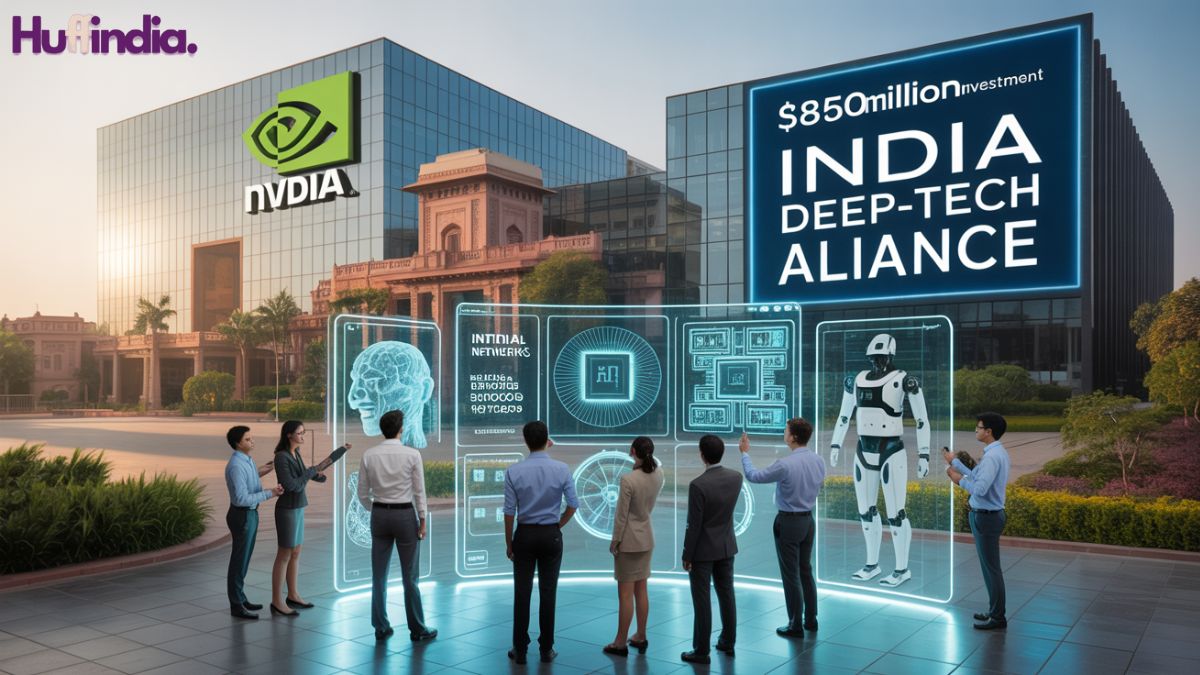In a major endorsement of India’s growing technological ambitions, Nvidia India Deep-Tech initiatives took a historic leap as the company announced an $850 million investment into the India Deep-Tech Alliance — a consortium of government, research, and industry bodies focused on advancing semiconductors, artificial intelligence, and robotics. The move highlights Nvidia’s long-term commitment to positioning India as a global innovation hub for next-generation computing technologies. This investment marks one of the largest commitments by a global technology leader toward India’s deep-tech ecosystem and is expected to boost local R&D capacity, encourage AI start-ups, and accelerate collaborations between academia and industry. Experts believe this will not only strengthen India’s semiconductor ambitions but also redefine its place in the global deep-tech value chain.
A new phase for India’s tech industry
For years, India’s IT industry has been service-orientated — focused on outsourcing and backend operations. Nvidia’s entry, however, signals a transition toward product-driven innovation. The Deep-Tech Alliance, set up earlier this year with a $1 billion corpus, is expected to act as a catalyst for domestic chip design, robotics and AI software.
The addition of Nvidia brings not just money but crucial access to intellectual property, developer platforms and AI computing infrastructure. “India’s time for product innovation has arrived,” said a senior industry official familiar with the alliance.
Strategic priorities
According to sources, the alliance will initially focus on:
- Semiconductor design and EDA tools for local chip development.
- AI training infrastructure, leveraging Nvidia GPUs and cloud partnerships.
- Robotics and automation to modernise manufacturing and logistics.
- Research collaboration between universities and deep-tech startups.
Government officials described the partnership as a long-term nation-building investment rather than a short-term commercial venture.
The policy connection
India has been wooing global semiconductor leaders under its Make-in-India 2.0 and Digital India AI Mission frameworks. The Nvidia deal follows recent investment talks with Micron, AMD and Intel — all of which aim to localise at least part of the chip value chain.
Experts believe this alliance could bridge a critical gap between India’s software talent and hardware capability. “India has the human capital but lacks fabrication infrastructure,” said tech analyst Rohan Joshi. “Partnerships like this help close that loop.”
The human impact
Beyond macroeconomics, this collaboration promises to democratise access to high-end research tools. Thousands of Indian engineers, researchers and students will gain exposure to Nvidia’s CUDA platforms and AI labs — opportunities previously confined to Silicon Valley or Taiwan.
The government is reportedly considering dedicated tax and training incentives for deep-tech professionals, particularly in Tier-2 and Tier-3 cities.
Global context
The partnership also carries geopolitical undertones. With the US pushing for diversified semiconductor ecosystems and India positioning itself as a neutral, reliable manufacturing base, such alliances strengthen bilateral ties.
Risks and realities
Still, experts caution that success depends on execution. Challenges include slow project approvals, limited fabrication capacity and high capital costs. India must ensure consistent policy, low import tariffs and fast-track regulatory clearance to retain investor interest.
Conclusion
Nvidia’s $850 million infusion is more than a corporate investment — it is a vote of confidence in India’s technological future. If the alliance achieves its mission, India could evolve from being the world’s IT outsourcing powerhouse to a genuine global innovation hub.
The next few years will show whether this is a one-off pledge or the dawn of India’s deep-tech revolution.


























